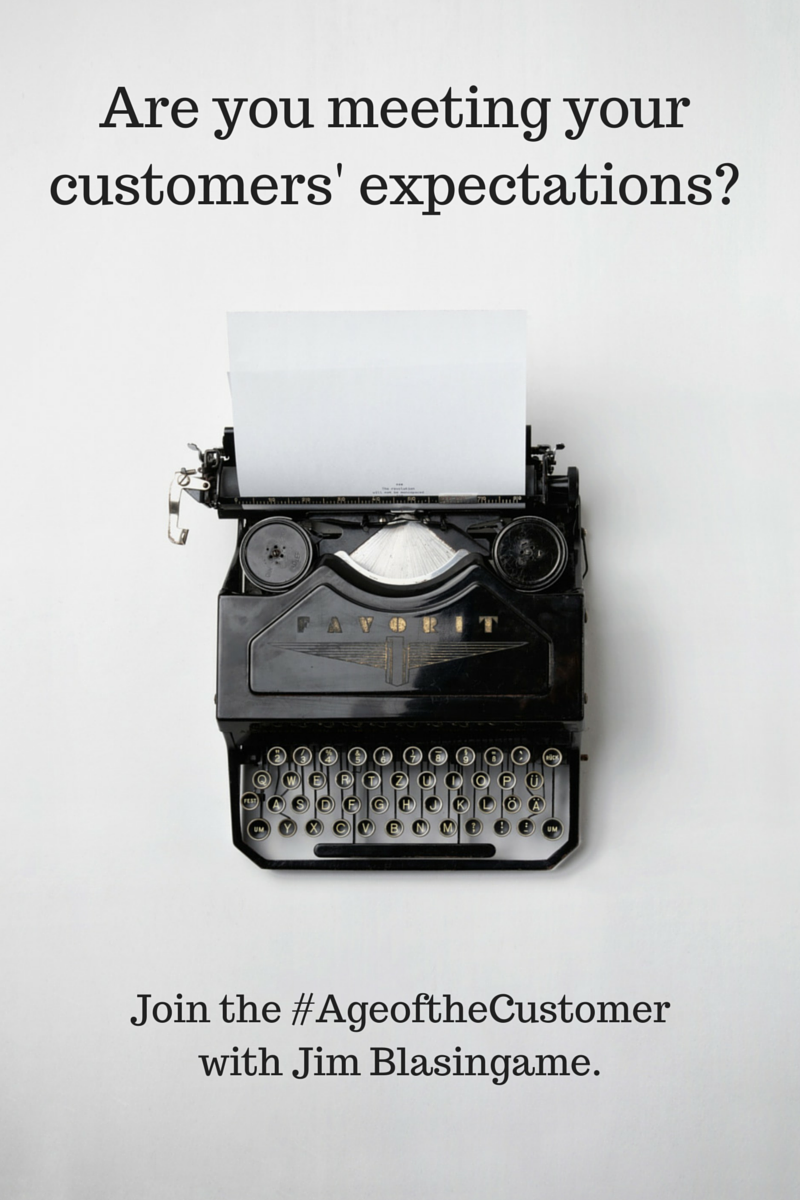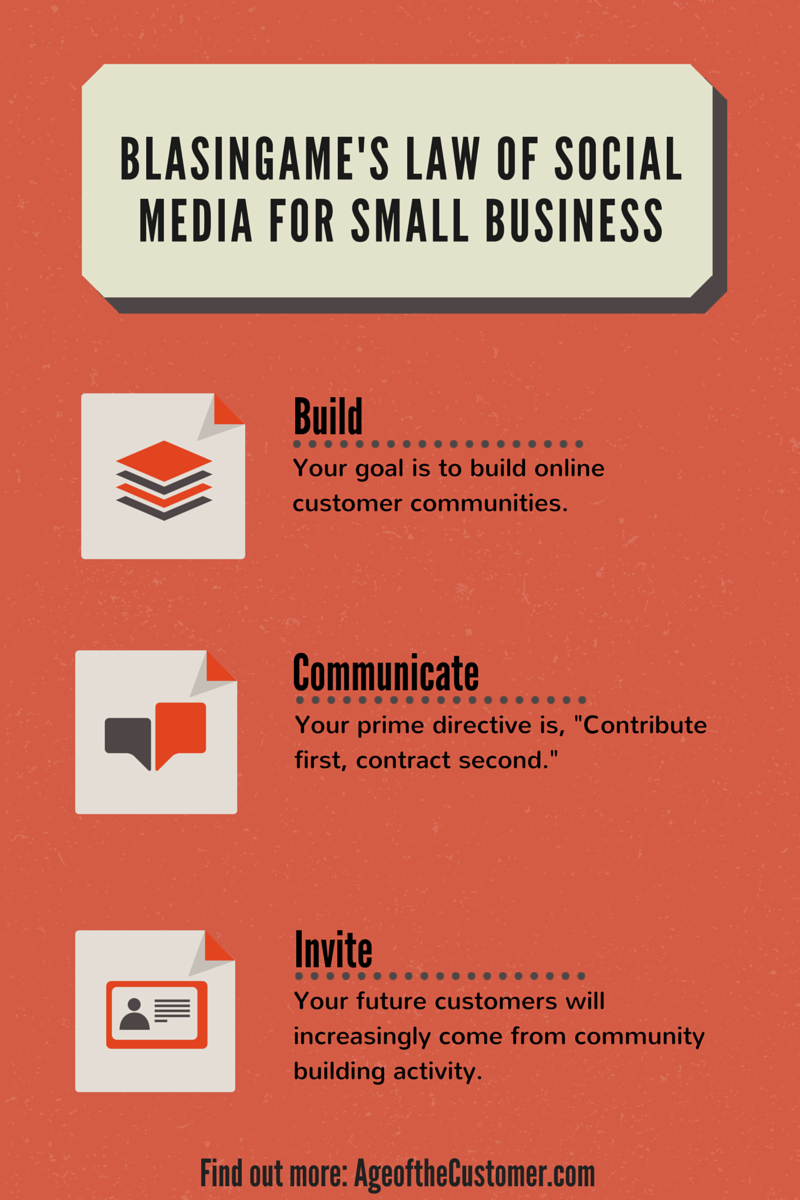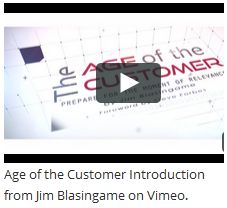VIDEO: Your future and customer paradigms
Award-winning author Jim Blasingame lists the top three primary shifts of the new age that a small business must monitor constantly in order to be successful in the Age of the Customer. You can purchase his new book The Age of the Customer here .
Click the image to start the video.
Celebrate your customers this week
 According to the ICSA, the purpose of National Customer Service Week is “to create a positive message that lasts all year long and to provide a productive opportunity to generate an even stronger commitment to customer service excellence.”
According to the ICSA, the purpose of National Customer Service Week is “to create a positive message that lasts all year long and to provide a productive opportunity to generate an even stronger commitment to customer service excellence.”You should never have “a customer from hell”
“This is one of those customers from hell.”
That’s what a small business owner said to me during one of my road trips across the country to check on how things are going out on Main Street.
“Ann” was responding to my query about her business. Her full quote was closer to, “Business is good. But right now I’ve got to spend most of the day dealing with this customer from hell.”
When I was a pup commission salesman right out of high school working in big ticket retail, I quickly realized all customers aren’t created equal; there are cool ones, high maintenance ones and impossible ones, like the one Ann was fuming about. My initial reaction was I didn’t like the latter two types and would try to avoid them. But upon more mature reflection I realized that if I was going to be successful selling on commission, I would have to do business with all kinds of customers, not just the easy ones. Honing this perspective over time, I developed the twin pillars of Blasingame’s Difficult Customer Strategy.
Pillar One: Make an extra effort to understand what troubles and/or motivates difficult customers and serve them within an inch of their lives. Most difficult customers will give you points for the effort and very likely their business in the bargain. And here’s an extra effort bonus: When a difficult customer likes you, you’ll have a customer for life, and the most valuable referral source.
Pillar Two: The hellish behavior of some customers typically manifests as excessive demands. When dealing with such people, charge them for their behavior. As I told Ann, charge difficult customers enough so that regardless of their level of maintenance, you hope they come back and ask for everything again. The key is to ask enough questions about their expectations before you set your price. Or at least remember the next time.
One former consulting client of mine could be difficult. Whenever we were face-to-face and he showed me his hellish side, I would exaggerate making a mark on my note pad, which he knew was to remind me to add a difficulty factor fee on his next invoice (he had a different name for it that can’t be used here). Eventually we joked about it, but he knew his behavior impacted his bill. He was a client for years and, difficult or not, I always liked his business.
Write this on a rock … You should never have a customer from hell.
Jim Blasingame is the author of the award-winning book, “The Age of the Customer: Prepare for the Moment of Relevance.”
AUDIO: The cost of not converting to Age of the Customer practices
What does it cost to reject The Age of the Customer shift? Jim Blasingame reveals that the only thing that costs more than converting to Age of the Customer practices is not converting.
Click the image to begin the audio.
Is a crowdfunding business loan right for you?
In my last column I introduced the concept of crowdfunding — the new word and online methods of fundraising and capitalization. The two crowdfunding examples I described were contributions and business transactions doubling as fundraising.
Let’s continue with the third type, which is, crowdfunding structured for loans.
 Crowdfunding debt, AKA peer-to-peer and social lending, is like traditional borrowing: a request for funds comes with the promise of repayment with interest over a specific term. But the former is done online, and the latter is not. Individuals use crowdfunding for personal loans, but our focus here is for business borrowing, which typically involve four crowds:
Crowdfunding debt, AKA peer-to-peer and social lending, is like traditional borrowing: a request for funds comes with the promise of repayment with interest over a specific term. But the former is done online, and the latter is not. Individuals use crowdfunding for personal loans, but our focus here is for business borrowing, which typically involve four crowds:
1. Business borrowers
2. An online crowdfunding platform aggregating loan requests
3. A funding and underwriting source, likely a hedge fund
4. Individuals who invest with #3, knowing it’s for loans to small businesses
Remember the innumerable and anonymous crowdfunding factors from the previous column? These two are also in play with crowdfunding debt, because a large crowd is required to provide a pool of loan funds and dilute the risk, and investors are only known to the funding source aggregator.
Regardless of the funding source, crowdfunding or traditional, small business loans are expensive for the borrower because this sector is considered high risk for two primary reasons:
1. Most small businesses are undercapitalized and operate on a thin survival margin
2. Too many small business owners don’t track financial performance well enough to know how they’re really doing.
And since crowdfunding loans are unsecured, taking the risk to an even higher level, crowdfunding business loans are doubly expensive.
So is a crowdfunding business loan right for you? Here’s some context: If you can borrow from your bank, this year you’ll probably pay an average of about 6% annual interest rate. A crowdfunding loan APR will likely be 15% or more. Any questions?
Crowdfunding business lending has achieved some level of critical mass and is growing. As I’ve said before, the future of small business capitalization will look a lot different than it does today largely due to this emerging alternative.
Next time we’ll wrap up this series with a tour of the good, bad, and improbable of investor equity crowdfunding. And more tough love.
Write this on a rock If you can borrow money from a bank, don’t borrow from a crowd
Jim Blasingame is the author of the award-winning book, “The Age of the Customer: Prepare for the Moment of Relevance.”












